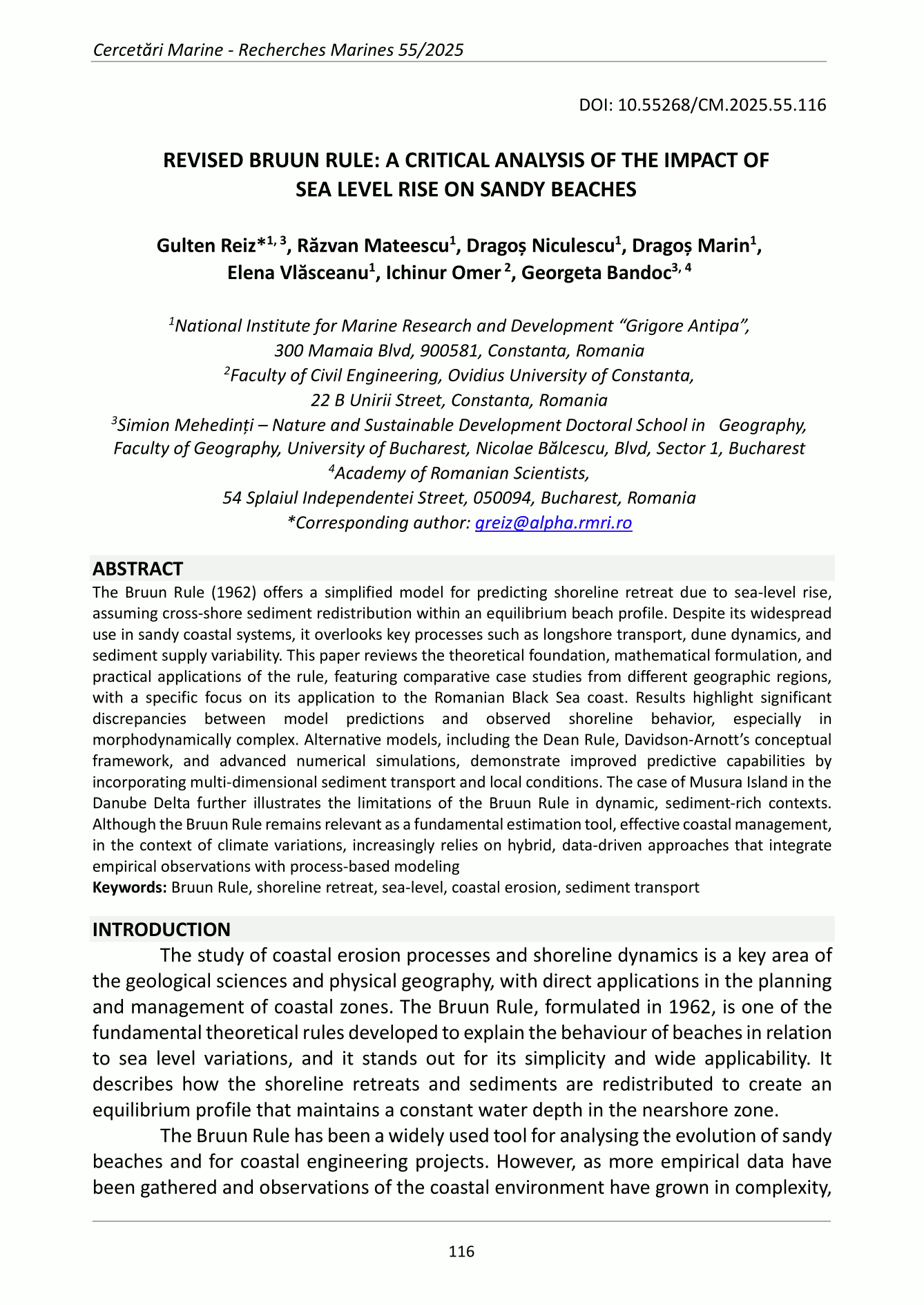REVISED BRUUN RULE: A CRITICAL ANALYSIS OF THE IMPACT OF SEA LEVEL RISE ON SANDY BEACHES
DOI:
https://doi.org/10.55268/CM.2025.55.116Keywords:
Bruun Rule, shoreline retreat, sea-level, coastal erosion, sediment transportAbstract
The Bruun Rule (1962) offers a simplified model for predicting shoreline retreat due to sea-level rise,
assuming cross-shore sediment redistribution within an equilibrium beach profile. Despite its widespread
use in sandy coastal systems, it overlooks key processes such as longshore transport, dune dynamics, and
sediment supply variability. This paper reviews the theoretical foundation, mathematical formulation, and
practical applications of the rule, featuring comparative case studies from different geographic regions,
with a specific focus on its application to the Romanian Black Sea coast. Results highlight significant
discrepancies between model predictions and observed shoreline behavior, especially in
morphodynamically complex. Alternative models, including the Dean Rule, Davidson-Arnott’s conceptual
framework, and advanced numerical simulations, demonstrate improved predictive capabilities by
incorporating multi-dimensional sediment transport and local conditions. The case of Musura Island in the
Danube Delta further illustrates the limitations of the Bruun Rule in dynamic, sediment-rich contexts.
Although the Bruun Rule remains relevant as a fundamental estimation tool, effective coastal management,
in the context of climate variations, increasingly relies on hybrid, data-driven approaches that integrate
empirical observations with process-based modeling.

Downloads
Published
How to Cite
Issue
Section
License

This work is licensed under a Creative Commons Attribution-NonCommercial-NoDerivatives 4.0 International License.
This is an open access journal, which means that all content is freely available without charge to the user or his/her institution. Users are allowed to read, download, copy, distribute, print, search, or link to the full texts of the articles, or use them for any other lawful purpose, without asking prior permission from the publisher or the author. This is in accordance with the BOAI definition of open access.






